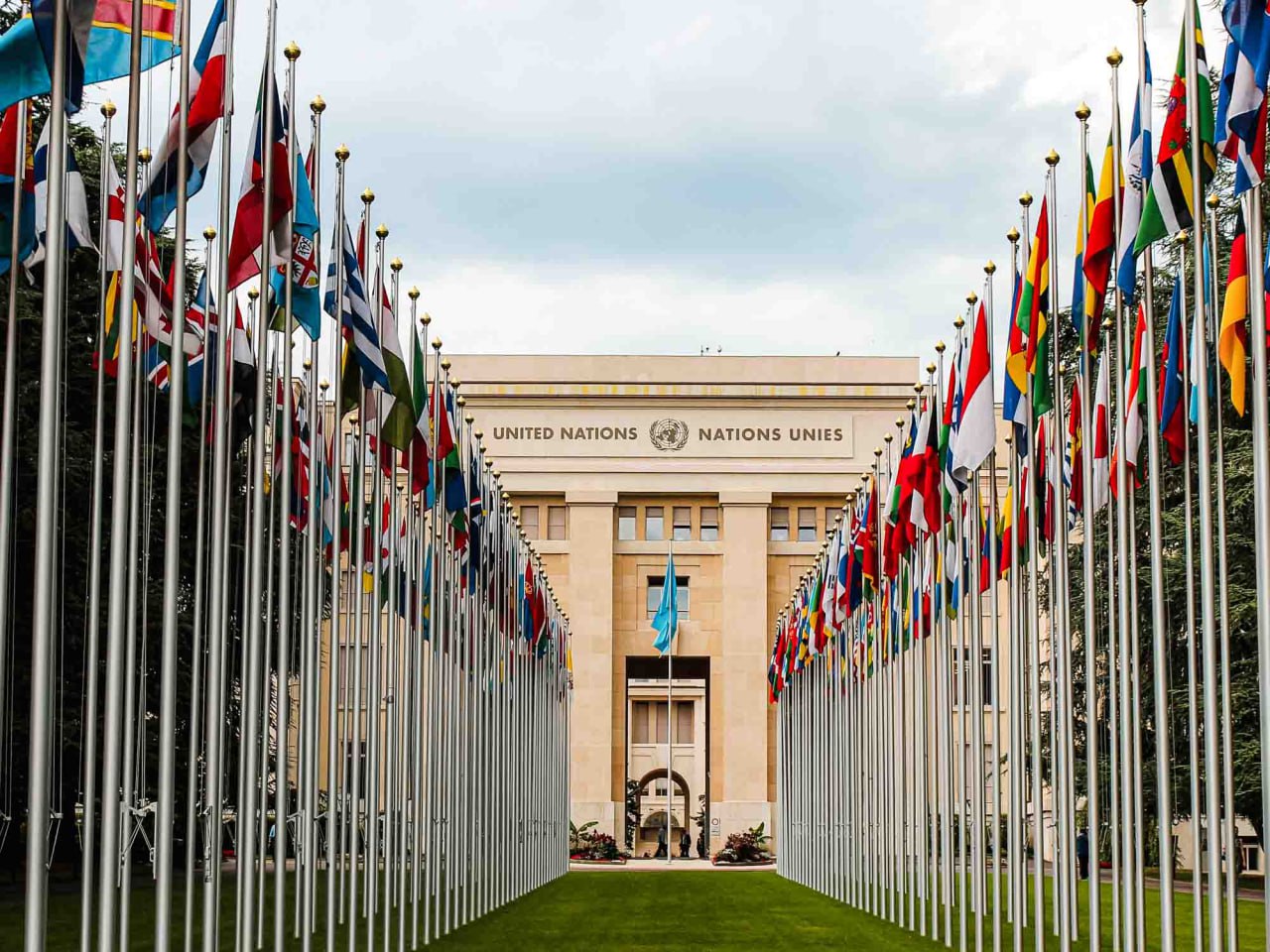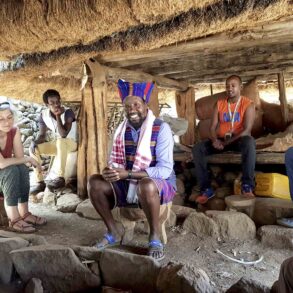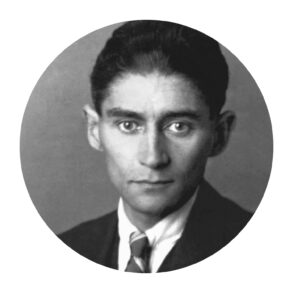The pen may be mightier than the sword, but we can’t escape the sword’s power to corrupt the word—the conditions under which the logos emerges are significant. Insulating and protecting expression and dialogue from the shadow of violence and economic influence is a fundamental challenge in political and cultural life.
When language and conversation are not clearly separated out from power, be it physical or economic, the exchange becomes multi-layered: things are going on beneath the surface that we are not privy to. We deceive ourselves if we overlook this. The cooperation of the criminal who silently accepts a verdict and offers their hands for cuffing seems eerily unreal if our eyes are closed to the threat of coercion they are under from the courtroom around them. The recorded confessions of Abu Zubaydah, the prisoner at Guantanamo, make no sense once we’ve seen his drawings of the conditions he was subjected to. By contrast, when Desmond Tutu and Nelson Mandela offered a field for human expression beyond juristic interference—during the Truth and Reconciliation Commission activities in South Africa—they took away the sword and gave the word space to emerge. Insofar as truth could be spoken, people could accept it, grieve, and find reconciliation and forgiveness on a collective level.
The dynamic between pen and sword—between meaning and coercion—issues a practical challenge to separate power or the threat of violence from important domains of collective life. (Economic influence is, of course, an equally important consideration that should not be underestimated.) The connection between the nation and the state is one point of entry to discussing this dynamic. “Nation” in this context refers to a linguistic and cultural community—a group of people who share a language and cultural and historical aspects of their identity. The “state”, by contrast, at least before the 1800s, was not narrowly identified with a single nation—the state contained many nations and nations had exchanges that were not connected to state concerns.
The state—with its sovereign territories and the linguistic and cultural communities that it is a vehicle for—is therefore a relatively recent development. Earlier states “…were defined by centers, borders were porous and indistinct, and sovereignties faded imperceptibly into one another.”1This orientation and its accompanying level of consciousness—which allowed for the intersection of eternity and linear time and a distinct sense of the enduring nature of the spiritual—are difficult for us to imagine today. Our weakness in imagining this premodern orientation is at the same time our strength in imagining the modern nation-state. The emergence of rationalism and the retreat of spiritual worldviews arise simultaneously as nationalism—people begin to conflate nation and state. Benedict Anderson—one of the most influential political scientists on this subject in the last 50 years—understood this shift in consciousness. In his famous study on nationalism, Imagined Communities, he points out what has become the most widespread modern understanding of the state: “Indeed, nation-ness is the most universally legitimate value in the political life of our time”.2
In the forty years since he wrote these remarks, the tendency to conflate nation and state has come clearly into focus. In light of this, events during these last decades bring up serious questions as to the peace potential of this “most universally legitimate value”, particularly in Eastern Europe. Take for instance the brutal battles between ethnic nations for control of the state in the former Yugoslavia and the Republic of Georgia. This coincided with the fall of the USSR, a social order explicitly set against nationalism. The intended collective identity in communist society was not national, linguistic or spiritual, but class based—the egalitarian awareness of the worker, forged on the factory floor, was to transcend ethnicity, blood relations, sex, and religion, so as to make a society of equal freedom possible. It is striking, therefore, when Anderson suggests that communist anti-nationalist attitudes actually bring nationalism in through the back door. Questions of leading a meaningful life that is connected not only to the human community but to a cosmic spiritual community are quashed. As Anderson puts it: “The great weakness of all evolutionary/progressive styles of thought, not excluding Marxism, is that such questions are answered with impatient silence.”3 Thus, although he comes from a very different path of political inquiry, Anderson, like Rudolf Steiner, connects the rise of nationalism to the decline of a view of life that situates the human being in a meaningful cosmos with an enduring spiritual dimension.
Nevertheless, juridical and constitutional designs do exist that aim to separate nations and linguistic communities from the state and to encourage cultural communities to seek values of their own outside matters of state and security. A century ago Steiner suggested nations and national cultures belong outside state structures, not unlike scientific activities. “The people of one language region do not come into unnatural conflict with the people of another if political organizations and economic power are not used to assert their cultures.”4 This is one facet of his tri-partite political theory which sets out to affirm and interweave three collective activities: free association, democratic process and a social economy.
A meaningful contribution in this area is Gidon Gottlieb’s Nation Against State. What if we continue to strive for states as vehicles for national self-determination? “The existence of more than 6,000 linguistic groups points to the potential number of ethnic claims to come.”5 Gottlieb suggests that future juridical design should create a “new space for nations that have not achieved independence without encouraging the forces of disintegration, of separatism and communal strife.”6 He explores the idea of formal structures for those nations that are not organized into independent states but that still wish to participate in the UN or other political assemblies. This could allow national identity and expression to be recognized without requiring the creation of a territorially defined state. Drawing on an impressive knowledge of such issues, Gottlieb sketches out possible scenarios for areas of conflict, such as Ireland, Yugoslavia, Armenia and Azerbaijan and Cypress. He pursues this idea as it relates to collective security, dual sovereignty, and regional and international political bodies.
Another potential exists in seed form with the separation of church and state formulated by Thomas Jefferson. Jefferson focused on the corruption that state affiliation can exercise on spiritual life. Through separating out the legitimate use of force—for instance, taxation to fund churches—Jefferson argued that religious communities themselves would be protected. Wilhelm von Humboldt also emphasized the corrupting and weakening influence that power can have on cultural life in his famous articulation of the connection between state and education, On the Limits of State Action. The important question in education is whether we can imagine many nations and diverse educational networks, approaches and curricula coexisting in relative independence from the states where they are active. Might this independence not release a more cosmopolitan spirit in education altogether? The recent Ukrainian legislation on languages of instruction or the laws Russia is implementing in newly occupied territories can encourage us to explore questions like this.
In both the separation of church from state and the suggested separation of education from state, we have an important intersection with the idea of separating nations and linguistic communities from states. The intention is to encourage the enlivening and meaningful powers latent in cultural exchange and discourse when this discourse is not dominated by dynamics of economics, state power and the threat of violence.
In conflict, we reach for solutions and de-escalation with the means and tools that we have. The skilled and knowledgeable diplomat and mediator will continue to be crucial here. So will new ideas. “Juridical design requires going beyond the bounds that international law traditionally recognizes.”7 One area where this will be urgently needed in the future is between nations and states, and it will involve more nuanced understandings of the relationship between violence and discourse in cultural activities around the world.
Image View of UN Headquarters in Geneva. Photo: Mathias Reding via Pexels
Footnotes
- Benedict Anderson. Imagined Communities: Reflections on the Origin and Spread of Nationalism. Verso, 2006, 19.
- Ibid. 3.
- Ibid. 10.
- Rudolf Steiner. Towards Social Renewal: Basic Issues of the Social Question. Rudolf Steiner Press, 2013, 128.
- Gidon Gottlieb. Nation Against State: A New Approach to Ethnic Conflicts and the Decline of Sovereignty . Council on Foreign Relations, 1993, 35.
- Ibid. 36.
- Ibid. 42.













